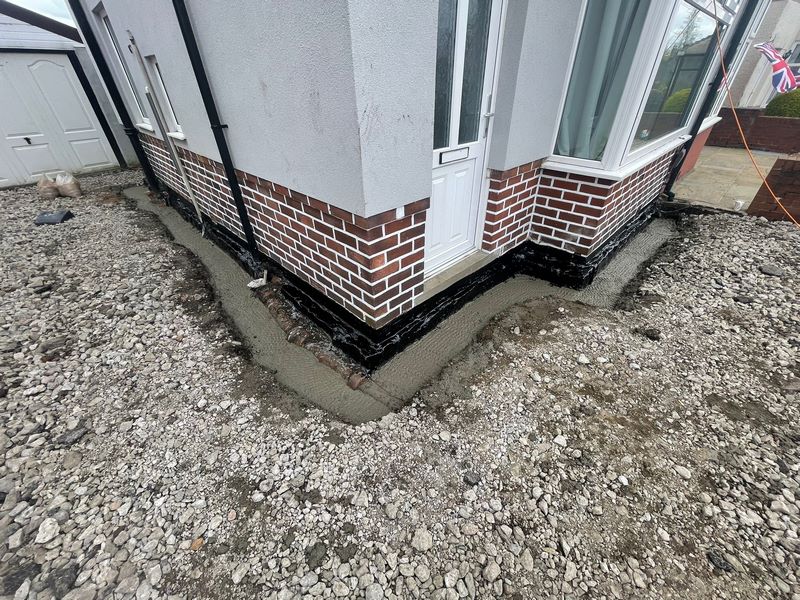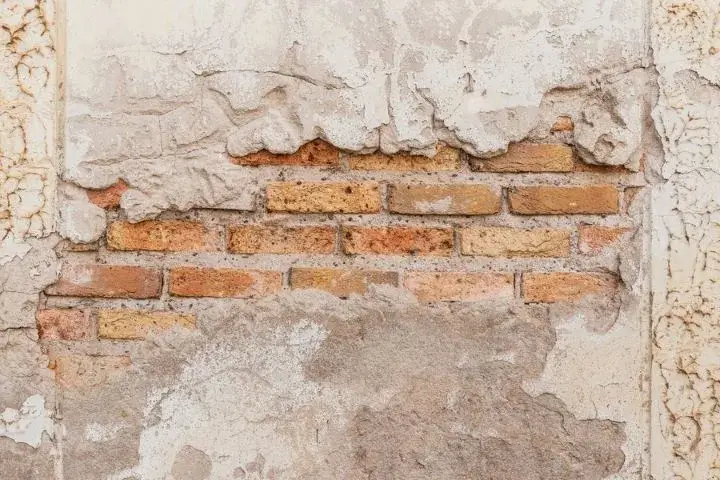The ultimate manual to mould treatment newcastle: Steps from start to finish
Wiki Article
Exploring the Different Methods and Solutions for Effective Damp Proofing
Moisture in structures postures significant challenges to both structural stability and interior air quality. Different techniques and remedies have arised to battle this pervasive issue. From standard damp-proof membranes to innovative chemical treatments, each technique offers unique advantages. Understanding these alternatives is vital for effective dampness control. Choosing the right solution depends on certain structure conditions and requirements, triggering additional exploration into the most effective damp proofing techniques available.Understanding the Sources Of Dampness
Dampness can arise from numerous resources, recognizing these causes is essential for efficient remediation. Generally, wetness originates from 3 main sources: climbing wet, permeating damp, and condensation. Climbing wet takes place when groundwater takes a trip up with porous products, such as brick or rock, frequently as a result of a lack of an effective obstacle (mould treatment newcastle). Permeating damp is normally triggered by external factors, including roof leaks, malfunctioning seamless gutters, or harmed wall surfaces, allowing water to penetrate a residential property. Condensation, on the other hand, arises from excess wetness in the air, often exacerbated by poor ventilation and temperature level distinctions, bring about water droplets basing on surface areas. Identifying these underlying issues is important, as each kind of dampness needs a customized approach for remediation. Appropriate assessment aids in identifying one of the most reliable services, inevitably securing the structural integrity of a structure and boosting interior air qualityConventional Damp-Proof Membrane Layers

Chemical Damp-Proofing Solutions
Chemical damp-proofing options provide an innovative method to avoid wetness intrusion in buildings. These approaches normally involve the application of fluid chemicals that penetrate masonry and create a barrier against increasing damp. Generally used chemicals include silanes, siloxanes, and various other water-repellent agents that react with surface materials to develop a hydrophobic layer.The application process generally needs exploration holes right into the walls, infusing the chemical solution, and permitting it to heal. This method is specifically useful for older frameworks where traditional damp-proof membranes might be not practical. Chemical damp-proofing can be less disruptive and more cost-efficient than substantial restoration projects.While reliable, these remedies depend on appropriate application and ecological conditions for peak efficiency. damp specialist newcastle. Routine maintenance and surveillance are vital to ensure the longevity of the damp-proofing treatment. In general, chemical damp-proofing stands for a flexible alternative for guarding structures against moisture-related damageTooth Cavity Wall Building And Construction Techniques
Dental caries wall surface building strategies use many advantages, specifically in wetness control and power effectiveness. By including an air void between 2 layers of masonry, these wall surfaces properly reduce water ingress while boosting insulation. This mix not just secures structures from moisture yet likewise adds to decreased power intake.Advantages of Cavity Walls
When taking into consideration effective moist proofing approaches, the benefits of cavity walls attract attention plainly. Cavity walls contain 2 separate layers, producing an air space that effectively decreases wetness infiltration. This design reduces the danger of moisture, as the outer wall surface works as a barrier against rainfall and water access. In addition, dental caries walls boost thermal insulation, which contributes to power performance by decreasing warmth loss. They additionally supply audio insulation, aiding to develop a quieter interior atmosphere. Furthermore, the air void enables ventilation, which aids in moisture control and lowers the chance of mold and mildew growth. These benefits not just improve the general comfort of a building yet additionally add to its long life and structural integrity.Dampness Control Methods
Efficient wetness control strategies are essential in dental caries wall building and construction to ensure lasting security versus moisture. One key technique involves the unification of weep holes, which promote water drainage from the dental caries, avoiding buildup. Additionally, using breathable membranes can assist manage wetness levels while enabling trapped vapor to run away. Appropriate placement of insulation is additionally essential, as it ought to not obstruct water drainage paths. Additionally, guaranteeing that the outer fallen leaves of the tooth cavity wall are created with water-resistant products improves total longevity. Routine upkeep checks are important to determine any blockages or damages early, protecting the framework's honesty. Inevitably, a mix of these techniques forms a robust defense against wetness invasion in tooth cavity wall surfaces.
Insulation and Power Performance
Insulation plays a vital role in improving energy performance within dental caries wall construction. By including shielding products, these walls create a thermal obstacle that reduces warmth loss and minimizes power consumption. Effective insulation not just assists maintain a stable indoor temperature level yet likewise reduces the danger of wetness, as it prevents condensation within the wall surface cavity. Different methods, such as using stiff foam boards or mineral wool, can be employed to accomplish suitable insulation performance. Furthermore, appropriate setup is necessary to ensure that voids and spaces are minimized, which can or else compromise power effectiveness. Inevitably, a well-insulated tooth cavity wall surface contributes significantly to total sustainability and reduces cooling and heating prices for house owners.External Damp Proofing Techniques
External wet proofing techniques are vital for safeguarding structures from dampness infiltration. Two reliable methods include the application of water-proof membrane layers and the installation of French drains pipes. These remedies assist reduce water build-up and preserve the integrity of buildings.Waterproof Membrane Application
While various methods exist for stopping moisture ingress, the application of water resistant membranes continues to be an extremely effective outside damp proofing strategy. These membrane layers are generally made from materials such as polyethylene, rubber, or modified asphalt, giving a durable barrier against water penetration. The installation procedure includes using the membrane layer to the exterior surfaces of foundations or wall surfaces, making certain complete protection to avoid leaks. Correct bond and securing at joints are vital to optimizing performance. Waterproof membranes can be applied in different forms, consisting of liquid coverings and sheet membrane layers, permitting adaptability based upon the certain needs of the structure. This approach not only safeguards buildings from moisture yet additionally boosts their longevity and structural integrity.French Drain Setup
One efficient technique for handling groundwater and protecting against dampness buildup around a structure's structure is the installment of a French drainpipe. This drain system contains a trench filled with gravel and a perforated pipe that redirects surface area water away from the foundation. Proper installation needs mindful preparation, guaranteeing that the drain inclines far from the structure to assist in perfect water flow. Additionally, the location of the drain is important; it needs to be placed in areas prone to pooling or excess dampness. Normal maintenance, consisting of clearing up debris from the gravel and making sure the pipe stays unblocked, is crucial for lasting effectiveness. Eventually, a well-installed French drainpipe can substantially decrease the risk of water-related concerns in cellars and foundations.Inside Waterproofing Techniques
Inside waterproofing strategies are crucial for shielding a structure's inside from wetness seepage and prospective water damages. These techniques typically entail the application of specific materials and methods made to develop a dampness barrier within the structure. One common strategy is making use of waterproof layers or sealers on walls and floors, which prevent moisture from passing through surfaces.Additionally, setting up indoor water drainage systems, such as sump pumps, can properly manage water buildup in cellars and creep areas. One more method involves making use of vapor obstacles, which are installed to hinder dampness motion from the ground right into living spaces.Moreover, dealing with any cracks or gaps in walls or structures with proper sealers guarantees an extensive defense against water breach. By executing these indoor waterproofing methods, homeowner can considerably lower the threat of mold development, architectural damages, and other moisture-related issues. Correct implementation of these strategies is crucial for lasting protection and building honesty.Routine Maintenance and Assessment Practices
Routine maintenance and assessment techniques are vital for ensuring the long-lasting performance of wet proofing solutions in any kind of building. Routine checks enable homeowner to recognize early indications of wetness intrusion, such as peeling paint, mold growth, and musty odors. These indications can signal underlying concerns that need prompt attention.Inspections need to be carried out at the very least each year, concentrating on susceptible areas like basements, crawl rooms, and exterior wall surfaces. Throughout these evaluations, home owners ought to take a look at sealants, drainage systems, and air flow to validate they work correctly.Additionally, keeping gutters and downspouts is crucial, as blocked systems can lead to water accumulation near the structure. Applying a regular upkeep schedule, along with timely repairs, can significantly expand the life expectancy of moist proofing actions and shield the structural integrity of the structure. Proactive steps eventually add to the total health and wellness of the living setting.Regularly Asked Questions
For How Long Does Damp Proofing Usually Last?
The period of damp proofing effectiveness varies, usually lasting between 20 to 50 years. Aspects such as application quality, ecological conditions, and maintenance methods substantially affect the longevity of the moist proofing treatment.
Can I Damp Proof My Home Myself?
The specific pondered the feasibility of DIY damp proofing. With proper research and the ideal products, it is possible. Nevertheless, they likewise acknowledged the relevance of professional support to ensure resilient efficiency and protect against future concerns.What Are the Signs of Inadequate Damp Proofing?
Signs of ineffective damp proofing include consistent mildewy smells, noticeable mold growth, peeling off paint, damp patches on wall surfaces, and wood degeneration - damp proofing newcastle. Homeowners need to resolve these issues without delay to avoid further damage and wellness concernsDoes Damp Proofing Affect Indoor Air High Quality?

Just How Much Does Specialist Damp Proofing Expense?
Expert moist proofing prices differ considerably, typically ranging from $1,000 to $5,000 depending on the residential or commercial property's dimension, the degree of get more info the moist problem, and selected approaches. Each scenario needs a customized assessment for accurate prices. Typically, wetness stems from 3 main resources: rising moist, penetrating wet, and condensation. When taking into consideration effective moist proofing techniques, the benefits of dental caries wall surfaces stand out prominently. Exterior damp proofing methods are important for shielding frameworks from dampness infiltration. While various methods exist for protecting against dampness access, the application of waterproof membranes stays a very effective outside moist proofing strategy. Indicators of inadequate wet proofing consist of consistent musty smells, visible mold and mildew growth, peeling off paint, wet patches on wall surfaces, and wood decay.Report this wiki page